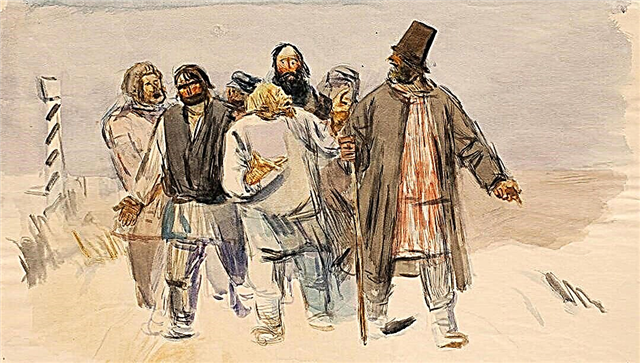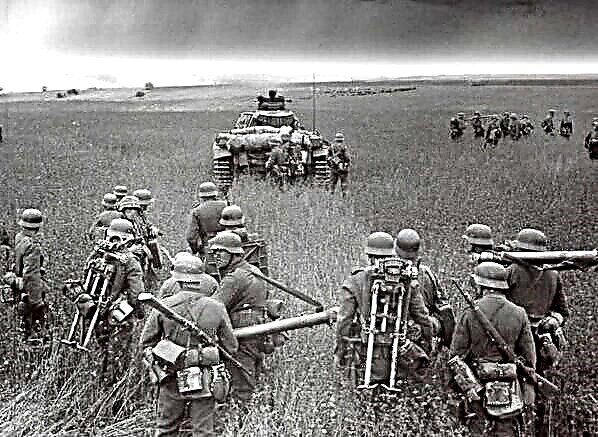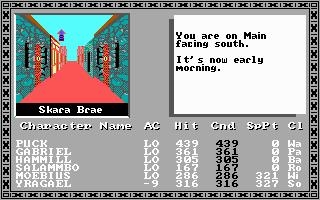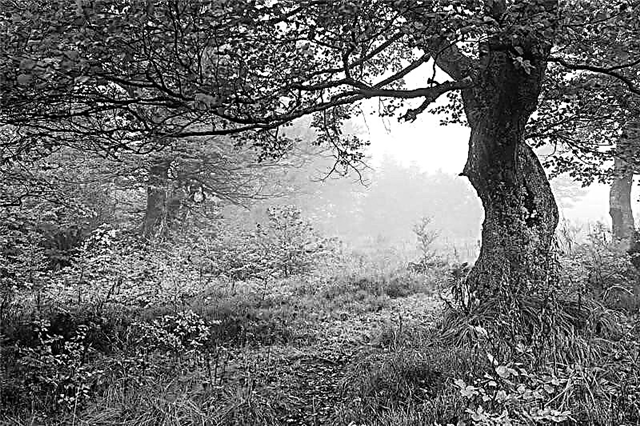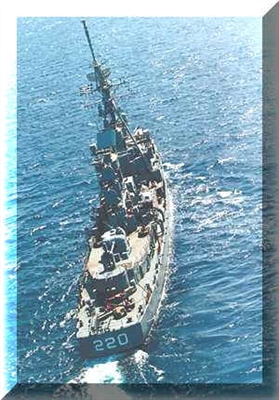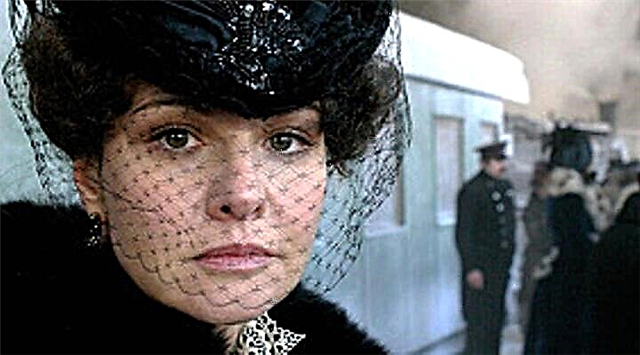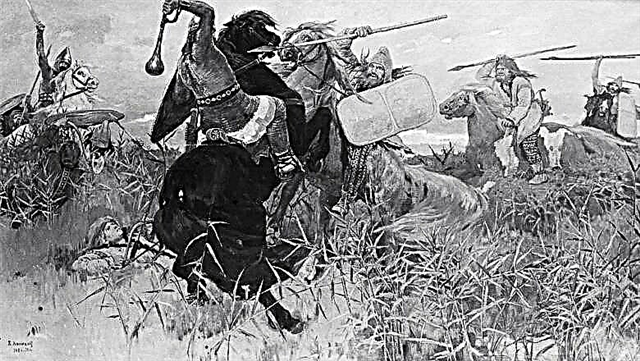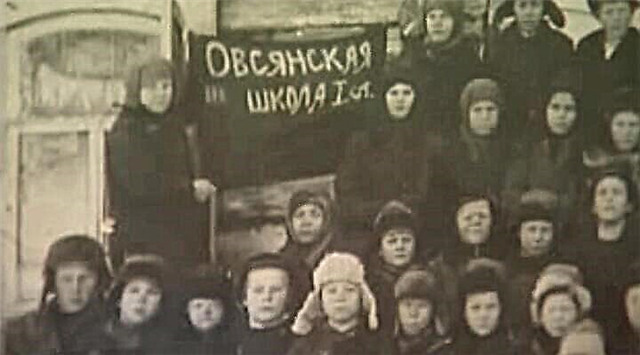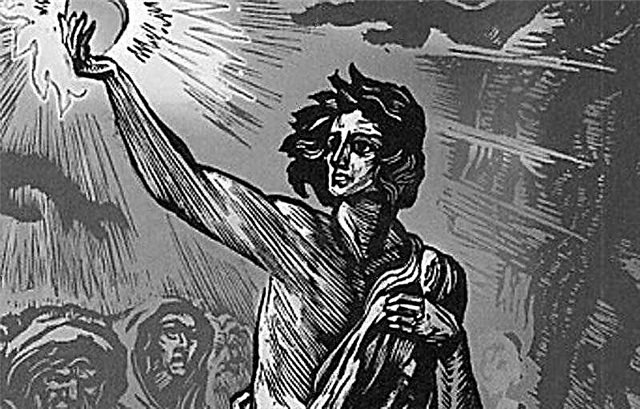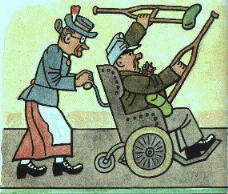The end of the 19th century is a complex and contradictory time. It is not surprising that it was in 1891 that one of the most mysterious Russian writers was born. We are talking about Mikhail Afanasevich Bulgakov - director, playwright, mystic, author of scripts and opera libretto. Bulgakov’s story is no less fascinating than his work, and the Literaguru team takes the liberty of proving it.
Birth and childhood
Birthday M.A. Bulgakova - May 3 (15). The father of the future writer, Afanasy Ivanovich, was a professor at the Theological Academy of Kiev. Mother, Varvara Mikhailovna Bulgakova (Pokrovskaya), raised seven children: Mikhail, Vera, Nadezhda, Barbara, Nikolai, Ivan, Elena. The family often staged plays, the plays for which were composed by Mikhail. Since childhood, he loved productions, vaudevilles, space sketches.
Bulgakov's house was a favorite meeting place for creative intelligentsia. His parents often invited eminent friends who had a certain influence on the gifted boy Misha. He loved to listen to adult conversations and willingly participated in them.
Youth: education and career start
Bulgakov studied at the gymnasium No. 1 of the city of Kiev. After graduating from it in 1901, he became a student of the medical faculty of Kiev University. The material condition of the future writer influenced the choice of a profession: after the death of his father, Bulgakov took responsibility for a large family. His mother got married again. All the children, except Mikhail, remained in good relations with their stepfather. The eldest son wanted to be financially independent. He graduated from the university in 1916 and received a medical degree with honors.
During the First World War, Mikhail Bulgakov served as a field doctor for several months, then got a place in the village of Nikolsky (Smolensk province). Then some stories were written, which later went into the cycle “Notes of a young doctor”. Due to the routine of boring provincial life, Bulgakov began to use drugs available to many representatives of his profession by occupation. He asked to be transferred to a new place so that drug addiction would be implicit for others: in any other case, the doctor could be deprived of a diploma. The loyal spouse, who secretly diluted the narcotic substance, helped get rid of the scourge. She strongly forced her husband to abandon a bad habit.
In 1917, Mikhail Bulgakov was appointed head of the departments of the Vyazemsky city zemstvo hospital. A year later, Bulgakov and his wife returned to Kiev, where the writer was engaged in private medical practice. Morphine addiction was defeated, but instead of drugs, Mikhail Bulgakov often drank alcohol.
Creation
At the end of 1918, Mikhail Bulgakov joined the officer squad. It is not established whether he was called up as a military doctor, or he himself expressed a desire to become a member of the detachment. F. Keller, the deputy chief commander, dismissed the units, so that he did not participate in the fighting then. But already in 1919 he was mobilized into the UPR army. Bulgakov fled. Versions regarding the future fate of the writer diverge: some witnesses claimed that he served in the Red Army, some that he did not leave Kiev before the arrival of the whites. It is reliably known that the writer was mobilized in the Volunteer Army (1919). Then he published the feuilleton "Future Prospects." Kiev events were reflected in the works “The Extraordinary Adventures of the Doctor” (1922), “The White Guard” (1924). It is worth noting that the writer chose literature as his main occupation in 1920: after completing his service at the hospital in Vladikavkaz, he began to write for the Kavkaz newspaper. Bulgakov’s creative career was thorny: during the struggle for power, an unfriendly statement addressed to one of the parties could end in death.
Genres, topics and issues
In the early twenties, Bulgakov wrote mainly works on the revolution, mainly plays, which were subsequently put on the stage of the Vladikavkaz Revolutionary Committee. Since 1921, the writer lived in Moscow and worked in various newspapers and magazines. In addition to feuilleton, he published separate chapters of short stories. For example, Notes on Cuffs was published on the pages of the Berlin newspaper Eve. Especially a lot of essays and reports - 120 - were published in the Gudok newspaper (1922-1926). Bulgakov was a member of the Russian Association of Proletarian Writers, but at the same time his art world was not dependent on the ideology of the union: he wrote with great sympathy about the white movement, about the tragic fate of the intelligentsia. His problems were much wider and richer than permitted. For example, the social responsibility of scientists for their inventions, satire on a new way of life in the country, etc.
In 1925, the play Days of the Turbins was written. She was a resounding success on the stage of the Moscow Art Academic Theater. Even Joseph Stalin appreciated the work, but still he in every thematic speech focused on the anti-Soviet character of Bulgakov’s plays. Soon, the writer's work was criticized. Over the next ten years, hundreds of harsh reviews have been published. The play “Running” about the Civil War was forbidden to be staged: Bulgakov refused to make the text “ideologically correct”. In 1928-29 from the theatre’s repertoire excluded the performances “Zoykina apartment”, “Days of the Turbins”, “Crimson Island”.
But the emigrants studied with interest the key works of Bulgakov. He wrote about the role of science in human life, about the importance of a proper relationship to each other. In 1929, the writer reflected on the future novel, The Master and Margarita. A year later, the first edition of the manuscript appeared. Religious topics, criticism of Soviet realities - all this made the appearance of Bulgakov’s works on the pages of newspapers impossible. It is not surprising that the writer was seriously thinking about moving abroad. He even wrote a letter to the Government in which he asked either to allow him to leave, or to give him the opportunity to work quietly. In the next six years, Mikhail Bulgakov was a director-assistant at the Moscow Art Theater.
Philosophy
The most famous works give an idea of the philosophy of the master of the printed word. For example, in the novel "The Devil" (1922), the problem of "little people" is described, which the classics so often addressed. According to Bulgakov, bureaucracy and indifference - this is a real evil force, and it is difficult to resist. The already mentioned novel "The White Guard" is largely autobiographical in nature. This is the biography of one family in a difficult situation: Civil war, enemies, the need to choose. Someone believed that Bulgakov was too loyal to the White Guards, someone reproached the author for the loyalty of the Soviet regime.
The story "Fatal Eggs" (1924) tells a truly fantastic story of a scientist who inadvertently introduced a new species of reptiles. These creatures constantly reproduce and soon fill the whole city. Some philologists claim that the image of professor Persikov reflected the figures of the biologist Alexander Gurvich and the leader of the proletariat V.I. Lenin. Another famous story is The Dog Heart (1925). It is interesting that in the USSR it was officially published only in 1987. At first glance, the plot is satirical: the professor transplanted the human pituitary to the dog, and the dog Sharik became a man. But is it human? .. Someone sees in this plot a prediction of future repressions.
Distinctive style
The author's main trump card was mysticism, which he wove into realistic works. Thanks to this, critics could not directly accuse him of insulting the feelings of the proletariat. The writer skillfully combined outright fiction and real socio-political problems. However, its fantastic elements are always an allegory for similar phenomena that actually occur.
For example, the novel "The Master and Margarita" combines a variety of genres: from parable to farce. Satan, having chosen the name Woland for himself, once arrives in Moscow. He meets people who receive punishment for their sins. Alas, the devil is the only force of justice in Soviet Moscow, because officials and their henchmen are stupid, greedy and cruel to their fellow citizens. They are real evil. Against this background, the love story of the talented Master (and indeed the master in the 1930s was called Maxim Gorky) and the bold Margarita unfolds. Only a mystical intervention saved the creators from certain death in a madhouse. The novel, for obvious reasons, was published after the death of Bulgakov. The same fate awaited the unfinished Theatrical Novel about the world of writers and theater-goers (1936–37) and, for example, the play Ivan Vasilievich (1936), a film based on which has been watched to this day.
Character writer
Friends and acquaintances considered Bulgakov both charming and very modest. The writer was always polite and knew how to move in time “into the shadows”. He possessed the talent of a storyteller: when he managed to overcome shyness, all those present listened only to him. The character of the author was based on the best qualities of the Russian intelligentsia: education, humanity, compassion and delicacy.
Bulgakov loved to joke, he never envied anyone and did not seek a better life. He was distinguished by sociability and secrecy, fearlessness and integrity, strength of character and credulity. Before the death of the novel "The Master and Margarita," the writer said only one thing: "Let them know." Such is his stingy characteristic to his ingenious creation.
Personal life
- Still, as a student, Mikhail Bulgakov married Tatyana Nikolaevna Lappa. The family had to face a shortage of funds. The first wife of the writer is the prototype of Anna Kirillovna (the story "Morphine"): disinterested, wise, ready to support. It was she who pulled him out of a narcotic nightmare, along with her he went through years of devastation and bloody contention of the Russian people. But a full-fledged family did not work out with her, because in those hungry years it was difficult to think about children. The wife suffered very much from the need to have abortions, because of this the Bulgakovs relationship cracked.
- So time would have passed if not for one evening: in 1924, Bulgakov was introduced Lyubov Evgenievna Belozerskaya. She had connections in the world of literature, and the White Guard was published not without her help. Love has become not just a friend and comrade like Tatyana, but also a writer’s muse. This is the second wife of the writer, an affair with which was bright and passionate.
- In 1929 he met Elena Shilovskaya. Subsequently, he admitted that he loved only this woman. At the time of the meeting, both were married, but the feelings were very strong. Elena Sergeevna was next to Bulgakov before his death. Bulgakov had no children. The first wife had two abortions from him. Perhaps that is why he always felt guilty in front of Tatyana Lappa. The adopted son of the writer was Eugene Shilovsky.
Interesting Facts
- The first work of Bulgakov is “The Adventures of Svetlana”. The story was written when the future writer was seven years old.
- The play “Days of the Turbins” was loved by Joseph Stalin. When the author asked to let him go abroad, Stalin himself called Bulgakov with the question: “What, are you really tired of us?” “Zoykin’s apartment” Stalin watched at least eight times. It is believed that he patronized the writer. In 1934, Bulgakov asked for a trip abroad so that he could improve his health. He was refused: Stalin understood that if the writer would remain in another country, then “Turbin Days” would have to be removed from the repertoire. These are the features of the author’s relationship with the authorities
- In 1938, Bulgakov wrote a play about Stalin at the request of representatives of the Moscow Art Theater. The leader read the Batum script and was not too pleased: he did not want the general public to learn about his past.
- Morphine, narrating about the addiction of a doctor, is an autobiographical work that helped Bulgakov defeat addiction. Confessing to paper, he received the strength to combat the disease.
- The author was very self-critical, so he loved to collect criticism of strangers. He cut out from the newspapers all reviews of his creations. Out of 298 were negative, and only three people praised Bulgakov’s work for his whole life. Thus, the writer knew firsthand the fate of his hunted hero - the Master.
- The relationship between the writer and his colleagues was very difficult. Someone supported him, for example, director Stanislavsky threatened to close his legendary theater if the screening of the White Guard was banned. And someone, for example, Vladimir Mayakovsky, offered to boo the show. He publicly criticized his colleague, very unpleasantly assessing his achievements.
- The Hippo cat was, it turns out, not at all the author’s invention. His prototype was the phenomenally smart black dog Bulgakov with the same nickname.
Death
What did Bulgakov die of? In the late thirties, he often spoke of imminent death. Friends considered this a joke: the writer loved the draws. In fact, Bulgakov, a former doctor, noticed the first signs of nephrosclerosis - a serious hereditary disease. In 1939, the diagnosis was made.
Bulgakov was 48 years old - as much as his father, who died of nephrosclerosis. At the end of his life, he again began to use morphine to muffle the pain. When he was blind, his wife wrote for him the chapters of “The Master and Margarita” under dictation. Editing focused on Margarita's words: "So, is this, therefore, the writers go behind the coffin?" March 10, 1940 Bulgakov died. He was buried in the Novodevichy cemetery.
Bulgakov House
In 2004, the “Bulgakov House” was opened in Moscow - a museum-theater and a cultural and educational center. Visitors can ride a tram, see the electronic exhibition dedicated to the life and work of the writer, sign up for a night tour of the "bad apartment" and meet a real Hippo cat. The function of the museum is to preserve Bulgakov’s heritage. The concept is connected with the mystical theme that the great writer loved so much.
There is also an outstanding Bulgakov Museum in Kiev. The apartment is pitted with secret passages and manholes. For example, from the closet you can get into the secret room, where there is something like an office. There you can see many exhibits talking about the childhood of the writer.

